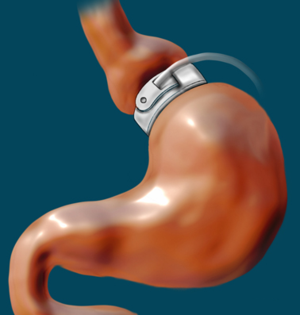- Written by Site Staff
- On Aug 09 2013,
- In Gastric Sleeve Surgery
The Gastric Sleeve Diet
The gastric sleeve diet is significantly less restrictive compared to diets of many other weight loss surgical treatments. On this diet you can just about consume anything you want – however, in order for the diet to be a success you will want to watch the quantity of fat, carbohydrates and sweets you take in. Certain spices might also need to be eliminated. The standard post surgical diet with this type of bariatric surgery is split into several stages.
Immediately after bariatric surgery, the patient is restricted to a clear liquid diet, which includes foods such as clear broth, diluted fruit juices or sugar-free gelatin desserts. This diet is continued until the gastrointestinal tract has recovered somewhat from the surgery. The next stage provides a blended or pureed sugar-free diet for at least two weeks. This may consist of skimmed milk, cream of wheat, a small pat of margarine, protein drinks, cream soup, pureed fruit and mashed potatoes with gravy.
Living donors are faced with risks and/or complications after the surgery. Blood clots and biliary problems have the possibility of arising in the donor post-op, but these issues are remedied fairly easily. Although death is a risk that a living donor must be willing to accept prior to the surgery, the mortality rate of living donors in the United States is low. The LDLT donor’s immune system does diminish as a result of the liver regenerating, so certain foods which would normally cause an upset stomach could cause serious illness.
Inability to eat can result from: diminished consciousness or confusion, or physical problems affecting the arm or hands, swallowing or chewing. Eating restrictions may also be imposed as part of treatment or investigations. Lack of food can result from: poverty, difficulty in shopping or cooking, and poor quality meals.
Separately, but in parallel with Kuzmak, Hallberg and Forsell in Stockholm, Sweden also developed an adjustable gastric band. After further work and modifications this eventually became known as the Swedish Adjustable Gastric Band (SAGB).
Any injury, such as a surgical operation, causes the body to increase the coagulation of the blood. Simultaneously, activity may be reduced. There is an increased probability of formation of clots in the veins of the legs, or sometimes the pelvis, particularly in the morbidly obese patient. A clot which breaks free and floats to the lungs is called a pulmonary embolus, a very dangerous occurrence. Blood thinners are commonly administered before surgery to reduce the probability of this type of complication.
No accurate number of adjustments required can be given. The amount of saline/isotonic solution needed in the band varies from patient to patient. There are a small number of people who find they do not need a fill at all and have sufficient restriction immediately following surgery. Others may need significant adjustments to the maximum the band is able to hold.
There are many tasty recipes for the gastric sleeve diet available for all stages of the food plan. Many people however decide to eat puréed baby foods and after that soft baby food items. Baby food is very healthy and with the addition of a multivitamin each day, you are getting all of the vitamins you need. On top of that, many of the baby foods available on the market these days are really delicious as well!
During a clinical visit, patients visiting for a regular fill adjustment will typically find they will spend more time talking about the adjustment and their progress than the actual fill itself, which generally will only take about one to two minutes. However, for some patients this type of fill is not possible, due to issues such as partial rotation of the port, or excess tissue above the port making it difficult to determine its precise location. In these cases, a fluoroscope will generally be used. It is more common practice for the band not to be filled at surgery—although some surgeons choose to place a small amount in the band at the time of surgery. The stomach tends to swell following surgery and it is possible that too great a restriction would be achieved if filled at that time. Clearly, this is undesirable.
There are certain patients who cannot tolerate the malabsorption and dumping syndrome associated with Gastric bypass. In such patients, although earlier considered to be a irreversible procedure, there are instances where Gastric bypass procedure can be partially reversed.
Over eating can lead to the stomach stretching - ie – allowing weight gain over time, or an urge to vomit – because of the severely restricted stomach in the gastric sleeve procedure. Remember, eating is a behavior based on many complex drives & possibly addictions – just getting weight loss surgery does not solve the obesity crisis – therefore, behavioral support to address eating behaviors will greatly improve chances for a successful surgery. Over eating can be even more dangerous with a weight loss surgical procedure. The eating habits do not disappear with obesity surgery.
Posts related to The Gastric Sleeve Diet
by Site Staff
Categories
Recent Posts
-
Gastric Sleeve Post Op Diet
Aug, 13, 2013
-
Gastric Sleeve Surgery – Benefits and ...
Aug, 12, 2013
-
The Gastric Sleeve Diet
Aug, 09, 2013
-
Considering Gastric Sleeve Surgery?
Aug, 08, 2013
-
Gastric Sleeve For Weight Loss – The F...
Aug, 07, 2013
-
Diagnostic Laparoscopy
Aug, 06, 2013
-
Gastric Band Surgery
Aug, 06, 2013
















